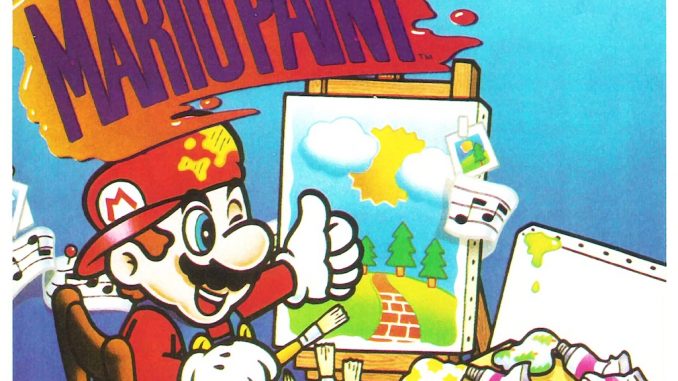
The graphics and music in videogames may be an art-form all their own but while videogame consoles provide their owners with an opportunity to appreciate them, they are not generally designed to also give those owners the ability to create them.
Facing mounting criticism from parents, educators and even legislators regarding the limited non-entertainment value of its products, Nintendo sought to counter that criticism with Mario Paint.
Videogame consoles such as the Super Nintendo had developed a poor reputation as instruments of consumption, creativity having exclusively been the domain of computers. Nintendo wanted to have at least one thing they could point potential Super Nintendo owners toward that demonstrated the console’s capability to foster creativity in their children – a salve to soothe the concerns of parents.
To that end, Mario Paint was released in 1992. Mario Paint allowed SNES users to create digital works of art. It included a mouse, not just to improve the user’s ability to draw, but also (let’s be honest) to make the SNES seem more like a computer.
 Users could draw using a simple, straightforward interface, and create ‘stamps’ that could then be used in drawings. They could also create animations and set them to music composed using Mario Paint’s built-in music editor. Of course, the user-interface elements in Mario Paint conformed to the Nintendo aesthetic, creating a very Mario-like experience. Every screen in the application is designed to be fun.
Users could draw using a simple, straightforward interface, and create ‘stamps’ that could then be used in drawings. They could also create animations and set them to music composed using Mario Paint’s built-in music editor. Of course, the user-interface elements in Mario Paint conformed to the Nintendo aesthetic, creating a very Mario-like experience. Every screen in the application is designed to be fun.
However, Nintendo must have decided that Mario Paint was still not ‘fun’ enough, as they also added a few other videogame-inspired elements (or maybe Nintendo just couldn’t help themselves) to keep users entertained (and their brand on-message). These included ‘easter eggs’ hidden on the title screen (clicking each letter in the title causes silly things to happen, such as Yoshi running across the screen, for example) and a ‘mini-game’ where the user swats flying insects with the mouse, called Gnat Attack.
In the Mario Paint ‘Player’s Guide’, Nintendo declared “Computer paint programs may be more sophisticated, but they don’t cover as much ground”. We’re supposing they mean Mario Paint’s ability to create animation and music. Which you could do.
With Mario Paint you can create an animation of up to 9 frames (the more frames, the smaller the animation). You can superimpose the animation over a background, and create a path for the animation to move on over time, such as Mario walking across the screen.
The music part is also amusing. Give it a shot. (You can try a web version at https://danielx.net/composer/)
Unfortunately, you could only save a single workspace – if you saved a new canvas (or a stamp without first loading the old canvas) you would lose your previously saved work. There there wasn’t any other method of keeping your previous creations other than by taping them using a VCR.
As an aside, the Mario Paint Player’s Guide is quite extensive and worth a look, as of this writing it was available on-line at https://annarchive.com/files/Mario%20Paint%20-%20SNES%20%20Nintendo.pdf
It contains a number of pixel artworks and example songs that you can manually transcribe into Mario Paint and play.
Mario Paint inspired another ‘creativity game’ called Acme Animation Factory. It could also use the mouse. The cartridge provides you with similar tools to create animated cartoons using the Looney Tunes characters, and set them to music.

Be the first to comment